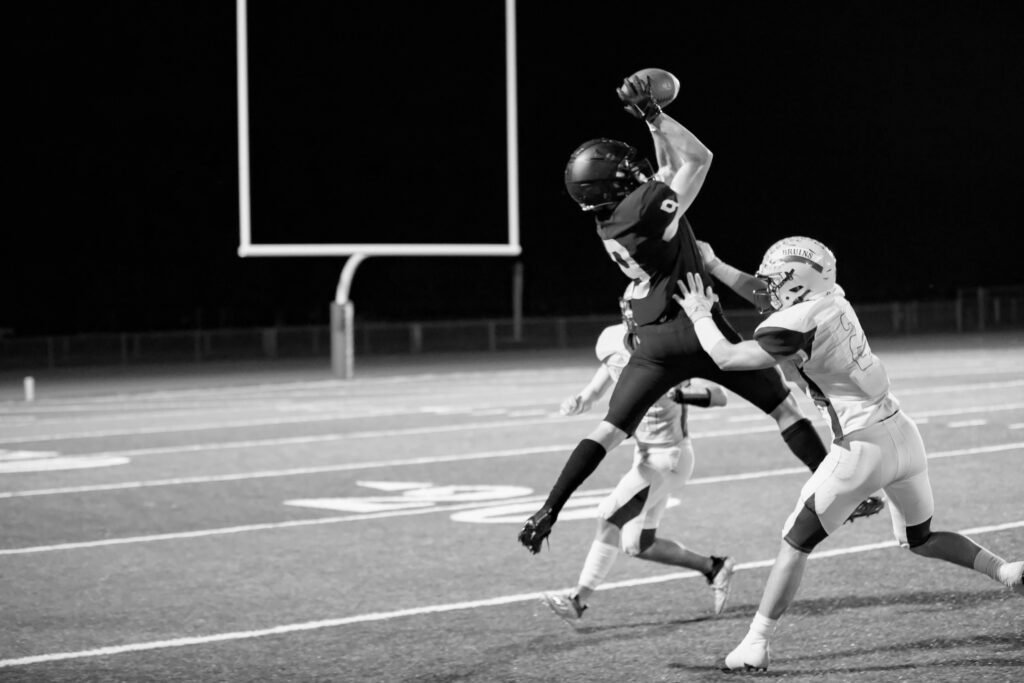Starting the college recruiting process can feel overwhelming — but the earlier you understand what coaches look for, the better your athlete’s chances. These 10 college recruiting tips break down what student-athletes and parents can do to stand out, from building an early online presence to mastering communication with coaches.
🏅 1. When Should the College Recruiting Process Start?
Recruiting starts earlier than you think. College coaches often begin identifying talent as early as freshman or sophomore year.
What parents can do:
Encourage your athlete to build an early online presence — including highlight videos, updated stats, and academic achievements — so they’re visible when coaches start scouting.
📬 2. Understanding NCAA Eligibility and Requirements
The NCAA, NAIA, and NJCAA each have strict rules about recruiting timelines, contact periods, and eligibility requirements (like GPA, coursework, and amateur status).
What parents can do:
Familiarize yourself with the NCAA Eligibility Center and help your athlete register early (ideally sophomore year). Track core courses and ensure transcripts meet requirements.
🎥 3. How to Create a Great College Recruiting Highlight Video
Highlight Vvdeos are crucial. A polished highlight video is often a recruiter’s first impression. It should show key skills, game intelligence, and athleticism in the first 60–90 seconds.
What parents can do:
Hire a videographer or learn basic editing to produce a clean, professional reel. Upload it to YouTube or Hudl and share the link with coaches in outreach emails.
📧 4. Personal Outreach Beats Waiting to Be Found
Many athletes think coaches will “find them,” but coaches receive thousands of submissions. Proactive outreach makes a huge difference.
What parents can do:
Help your child craft personalized emails to target schools, including their highlight link, academic stats, and reasons they’re a good fit. Keep it concise and professional.
🧠 5. The Role of Academics in College Recruiting
Academics are as important as athletics. Coaches want reliable athletes who won’t struggle academically. GPA, test scores, and discipline influence scholarship offers.
What parents can do:
Promote time management, study habits, and tutoring if needed. A strong GPA opens the door to more schools and more scholarship options.
🤝 6. Recruiting Services and Camps Can Help — But Choose Wisely
Showcases, camps, and recruiting platforms can connect athletes with coaches — but some are overpriced or ineffective.
What parents can do:
Research each program’s track record and which college coaches attend. Prioritize sport-specific camps hosted by colleges your athlete wants to attend.
📈 7. Social Media Is a Scouting Tool
Coaches often check athletes’ social media profiles to assess character and maturity.
What parents can do:
Encourage your athlete to maintain a clean, positive digital footprint. Post highlights, achievements, and community involvement — but avoid negative or controversial content.
💬 8. Communication Skills Make a Lasting Impression
Coaches look for athletes who are respectful, articulate, and self-motivated — not parents who dominate the conversation.
What parents can do:
Coach your child to handle most communication directly with recruiters, while you provide support in the background. Be encouraging, not overbearing.
💰 9. Scholarships Come in Many Forms
Not all scholarships are full rides — many are partial athletic, academic, or need-based combinations.
What parents can do:
Help your athlete apply for academic aid and grants in addition to athletic ones. Maintain a spreadsheet of offers, deadlines, and requirements for comparison.
🧭 10. Fit and Longevity Matter More Than Prestige
Choosing the right school means finding a balance between athletics, academics, and personal growth.
What parents can do:
Guide your child to evaluate coaching styles, team culture, campus life, and academic programs — not just division level or brand name.
✅ Bonus Tip: Start Building Relationships Early
Recruiting is built on consistent communication and reputation. A polite, humble, and coachable attitude often opens doors that stats alone cannot.

